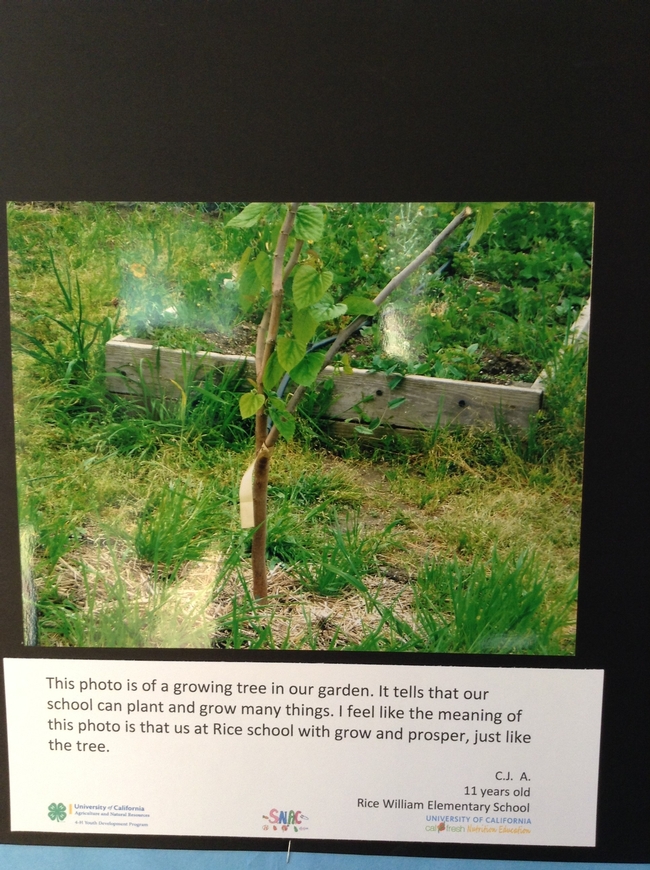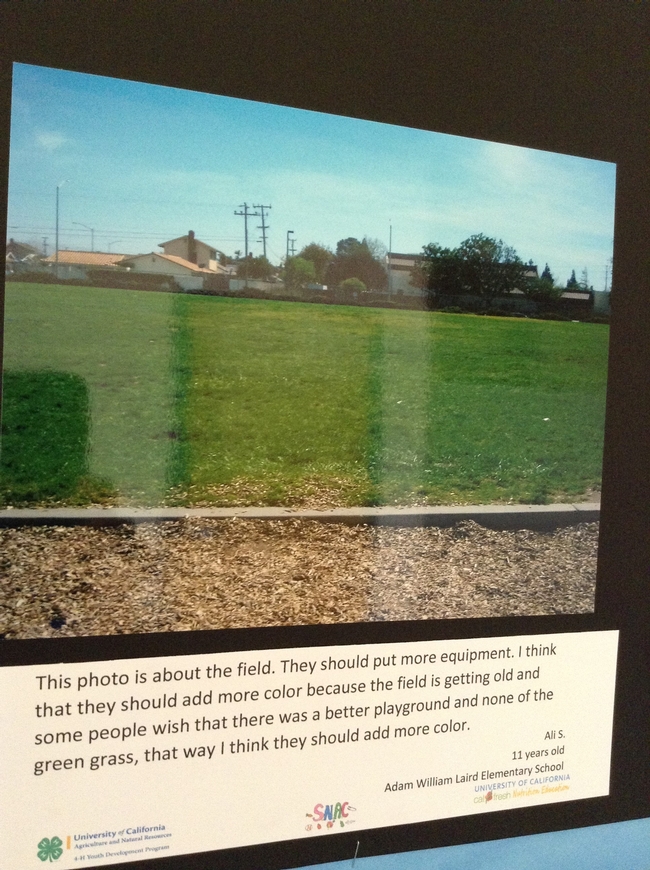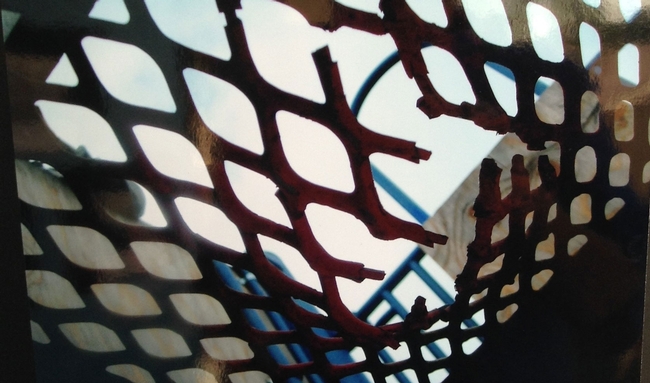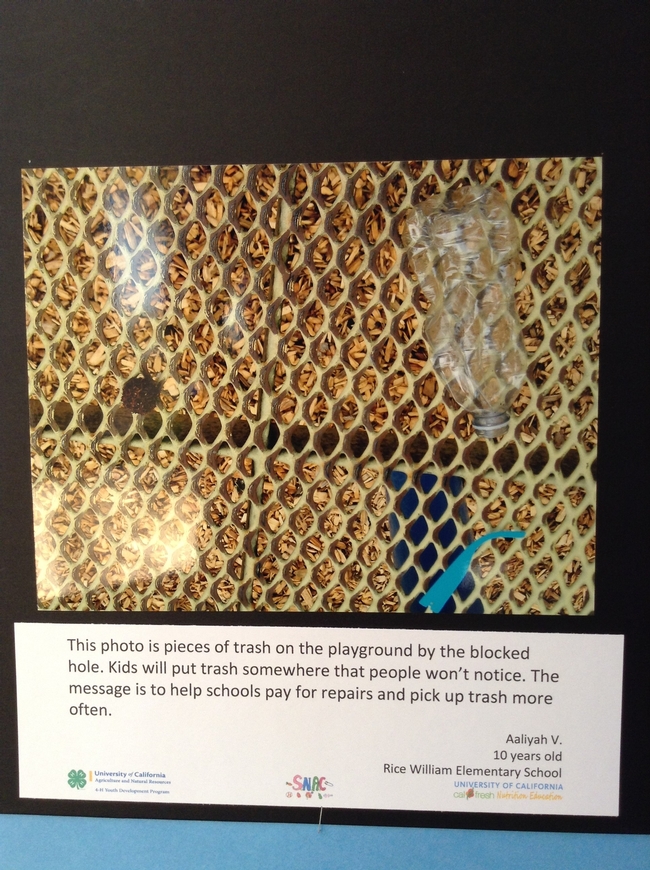An important aspect of positive youth development is engaging youth in meaningful activities, building youth capacity, and helping youth develop leadership skills. As older students on their elementary school campuses, fifth- and sixth-grade student leaders can have a significant role in inspiring peers to make positive and healthy lifestyle choices. Student leaders can also have great impacts on their own families and communities by sharing what they know about nutrition and health in culturally relevant and accessible ways that inspire those around them.

The 11-week photovoice project started with students and project leaders getting to know one another and building trust with icebreakers, energizers and games. The students came together weekly to discuss barriers and opportunities for healthy play, physical activity and healthy food in their schools. Next, students learned to define important terms like “advocacy” and “photovoice.” Through these meetings and discussions students continued to explore what it means to “have a voice” or “a platform to advocate for change” from within their youth perspective.
Over the course of several weeks, students took walking field trips around their school campuses and photographed images of their school environment that they found significant. Although each student took a number of photographs, they each selected one image that was the most significant to them. Each student shared with the rest of their club why that image was significant and how they felt when they looked at it. Students then wrote a short description about their photograph, why they selected that image, what the image meant, and how that meaning was important to them as a student leader and to their school community. The project culminated with the youth sharing their collective voice with other students, school administrators, teachers and parents.

After the months' long project, it was rewarding and humbling to see the student leaders sharing their unique youth perspective. The youths' communities found value in their photographs as well. Images were framed and displayed alongside their interpretative narratives at local school sites, the school district office, the county fair, and other community sites as testaments to youth vision for healthy and thriving school communities. The school district displayed several of these photovoice stories in the halls of the central district building. Three students entered their photos at the Santa Barbara County Fair. This is notable because none of these students had previous experience entering their work at a county fair and they were able to gain wider exposure and recognition for their work. One student won first place and another received an honorable mention in the county-wide youth photography competition.
The UCCE Youth, Families and Communities Program in Santa Barbara County focuses on deepening engagement in nutrition education with youth and families in low-income settings while increasing positive youth development outcomes.This photovoice project was funded through local grant awards from the National 4-H Council in collaboration with Lockheed Martin, and UC CalFresh Nutrition Education Program, which is a joint agreement among the U.S. Department of Agriculture/Food and Nutrition Service (USDA/FNS), the California Department of Social Services (CDSS) CalFresh branch, and the University of California Cooperative Extension (UCCE).

